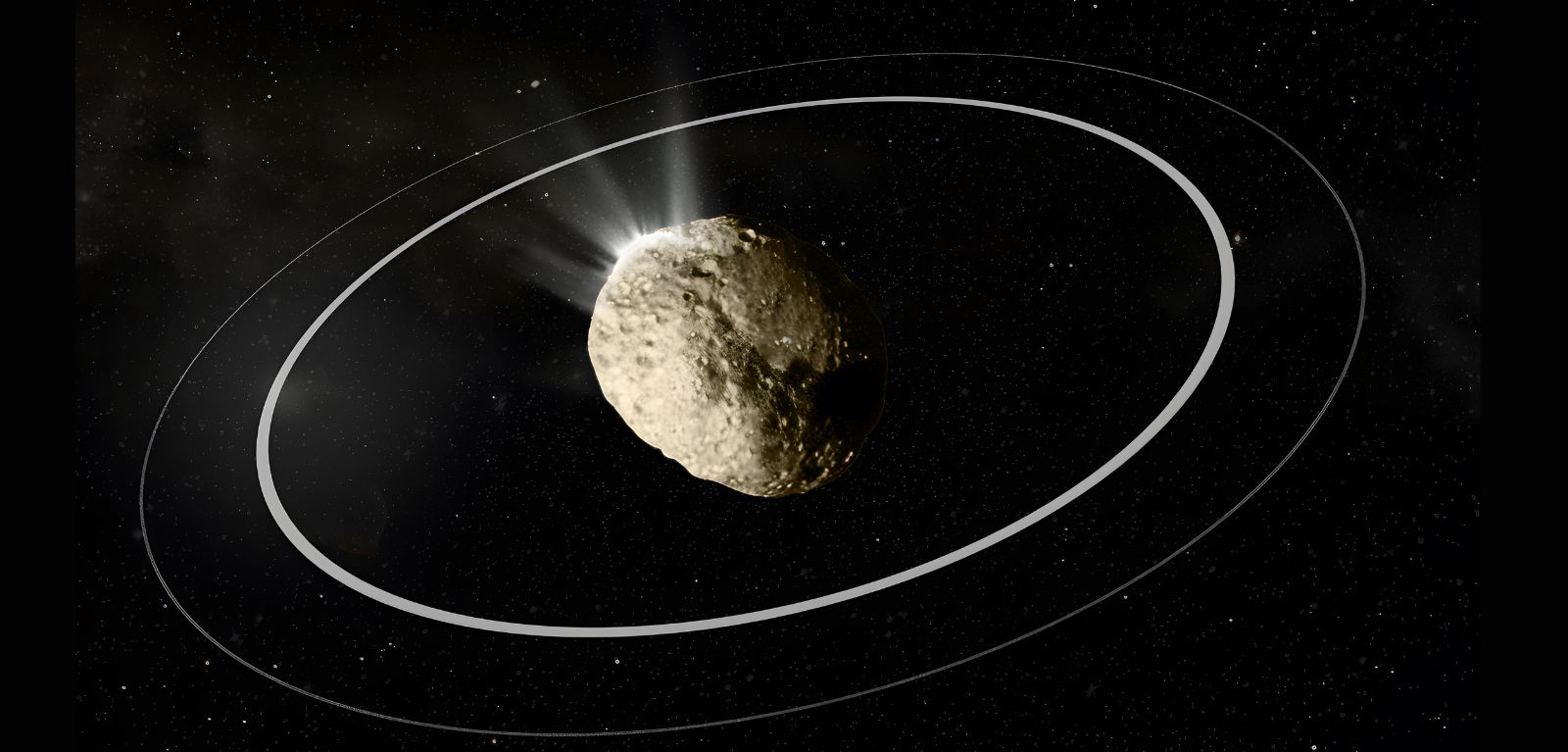What’s going on with Chiron? New study investigates Solar System mystery
Planetary Astronomers at Queen’s University Belfast have conducted a study to uncover one of the Solar Systems biggest mysteries; what happened to Chiron?

Firstly, what is Chiron?
Originally discovered in 1977 and classified as an asteroid, mini-planet Chiron was the first identified member of a new class of objects in our Solar System now known as the Centaurs.
The Centaurs are objects on short-lived orbits residing between the asteroid belt and the Kuiper belt, a doughnut-shaped region of icy bodies extending far beyond the orbit of Neptune.
Like Chiron, Centaurs are escapees from the Kuiper belt that are being scattered by the giant planets like a pinball hitting the bumpers in an arcade machine.
Most Centaurs will be ‘bouncing’ around for approximately 10 million years, before being propelled out of the Solar System, with only a few surviving to become short period comets.
Over the past 50 years or so, Chiron has continued to stand out from the rest of the Centaurs. Being one of the biggest Centaurs in size, this Solar System body has been known to behave like a comet with bouts of activity creating a fuzzy and dusty atmosphere. More recent studies have even found evidence of a possible double icy ring circling the planetoid.
A complex character, Chiron has puzzled astronomers alike for almost half a century, however, it is the Centaurs’ most recent goings on that has sparked further major intrigue.
The mystery
Sifting through the Asteroid Terrestrial-impact Last Alert System (ATLAS) data in 2021, Queen’s astronomers noticed Chiron was unexpectedly much brighter in the night sky when comparing it to the previous 5 years of observations.
ATLAS is a network of four small robotic telescopes in Hawaii, South Africa, and Chile, working in tandem to scan the entire night sky in a daily search for potential asteroid impactors.
Something had happened and now Chiron was reflecting much more sunlight back to Earth. But how?
Whatever the cause, the change had occurred when Chiron was behind the Sun and not visible from Earth for over five months.
Dr Matthew Dobson, a PhD student in the School of Mathematics and Physics at Queen’s led a team to try and crack the case. The results are summarised in a new paper, published today in The Planetary Science Journal, which explores various hypothesises. Dobson said:
“The aim of this study was to figure out what caused the change in Chiron’s brightness, was it was the rings, sudden cometary activity, a new exposed part of the object facing the Earth?
“We combined historic data and examined observations from on-going surveys that had observed Chiron to test these theories. We also used the Gemini Observatory telescope, one of the largest telescopes in the world, to uncover as much as we could.”
The findings
The paper reveals that Chiron had experienced an increase or endured an outburst of cometary activity. Queen’s researchers explored Chiron with the Gemini Observatory telescope to search for a fuzzy coma, a common tell-tale sign of a comet.
With no coma in sight, they have determined it could be that the coma is held tight to Chiron by its weak gravity, or that it is so far out that it is too dim to see around the object, even with the huge Gemini telescope. However, the increase in light from the extra dust around Chiron does remain visible.
What does this mean?
Examining this strange event on a small body in the Solar System, and exploring the active processes happening in real time, helps astronomers better understand the cometary processes active within Centaurs, a crucial stage in the evolution for some of our Solar System’s short period comets.
Speaking on the impact of the results, Dr Meg Schwamb, a co-author on the paper, also from the School of Mathematics and Physics at Queen’s, said:
“Most searches for activity look for the telltale signature of a fuzzy coma around the object.
“This paper examined the long-term brightness trend of the object over time, and we believe this technique will be crucially important as the next generation of Solar System discovery and monitoring surveys, such as the Legacy Survey of Space and Time, come online in the next few years.”
Additionally, co-author Dr Charles Schambeau of the University of Central Florida and lead of the Gemini observations said:
“The technique utilised with the extensive ATLAS data enabled the detection of Chiron’s activity onset, which was later corroborated by observations from the JWST by an independent team that revealed a conspicuous fan-shaped coma. Consequently, Dr Dobson’s method for identifying activity, even when traditional approaches suggest inactivity, can be confidently extended to study additional objects in the future.”
This research was funded by the UK Science and Technology Facilities Council (STFC) organisation. The paper can be viewed here.
Featured Expert

Media
For media enquiries please contact Grace White: g.white@qub.ac.uk